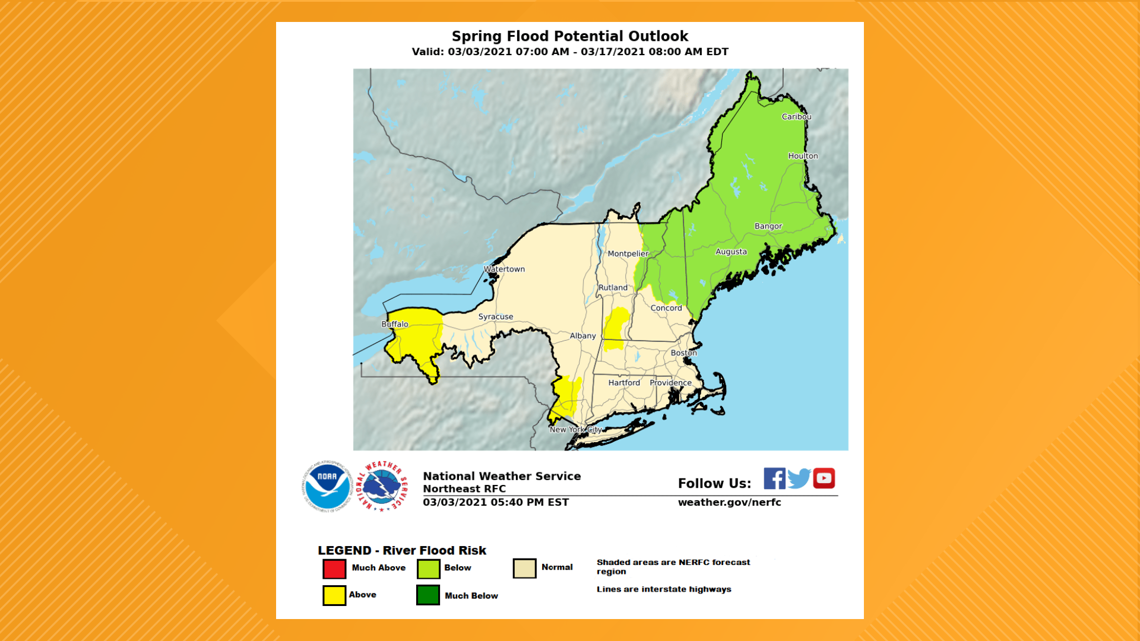BUFFALO, N.Y. — From January 1 through May, the Northeast River Forecast Center (NERFC) issues an updated flood outlook for the northeast every other week. But as temperatures start to warm, snow begins to melt and seasonal precipitation transitions to mainly rain, these flood outlooks become much more important heading into spring.
As of March 4, the winter/spring flood forecast for portions of New York State is slightly above normal, including Western New York and the Mid-Hudson Valley. This means that there is the potential for minor river flooding and ice jams over the next two weeks primarily due to anticipated snowmelt. Widespread flooding or flash flooding is not expected.


This is the first flood outlook of Meteorological Spring and comes after winter months with near seasonal snowfall and a few extended cold snaps.
Looking ahead to mid-March, change in seasonal climate patterns, such as the North Atlantic Oscillation (NAO) over Greenland, could allow for a warmer temperatures and heavier precipitation across Western New York. Temperatures will be above normal for Buffalo, high temperatures possibly in the 50s, which would also allow for rain rather than snow with incoming weather systems.
Impressive snowmelt will likely accompany this warm up with much of it draining through the Niagara River and Lake Erie water basins. These are just a few factors as to why the river flood outlook is above normal for Western New York so far. Those who live along river basins, creeks and streams should monitor water levels over the next two weeks as all these factors come into play.
The NERFC did mention that the threat of ice jams for Western New York is low and will decrease through the month. More so the threat of flooding due to ice jams is below normal or has passed for the season.
Additionally, the few warm afternoons in late February and early March helped kickstart some of the snowmelt for Western New York. So snow depths and water equivalents are not as high as they could have been heading into spring.


